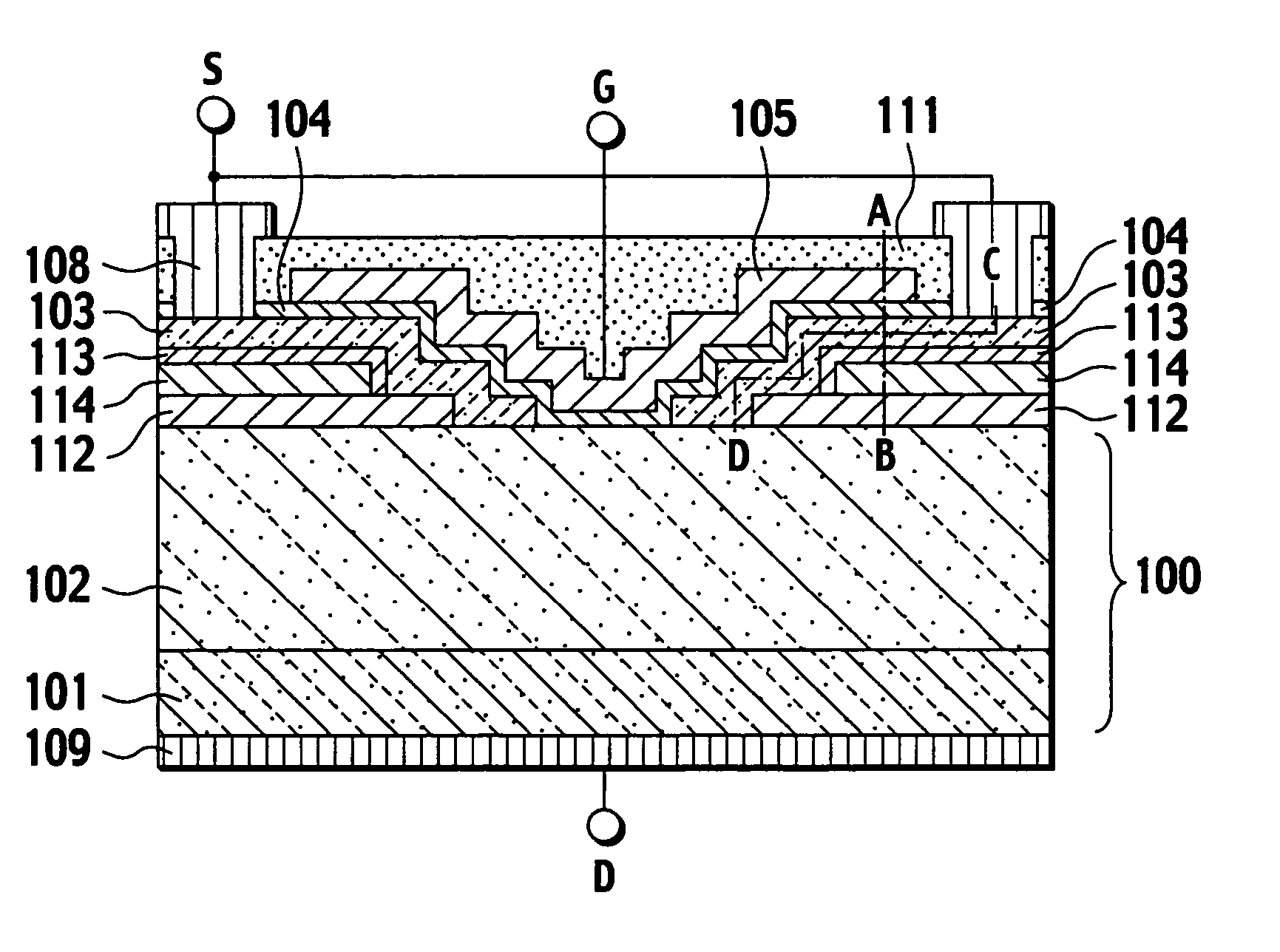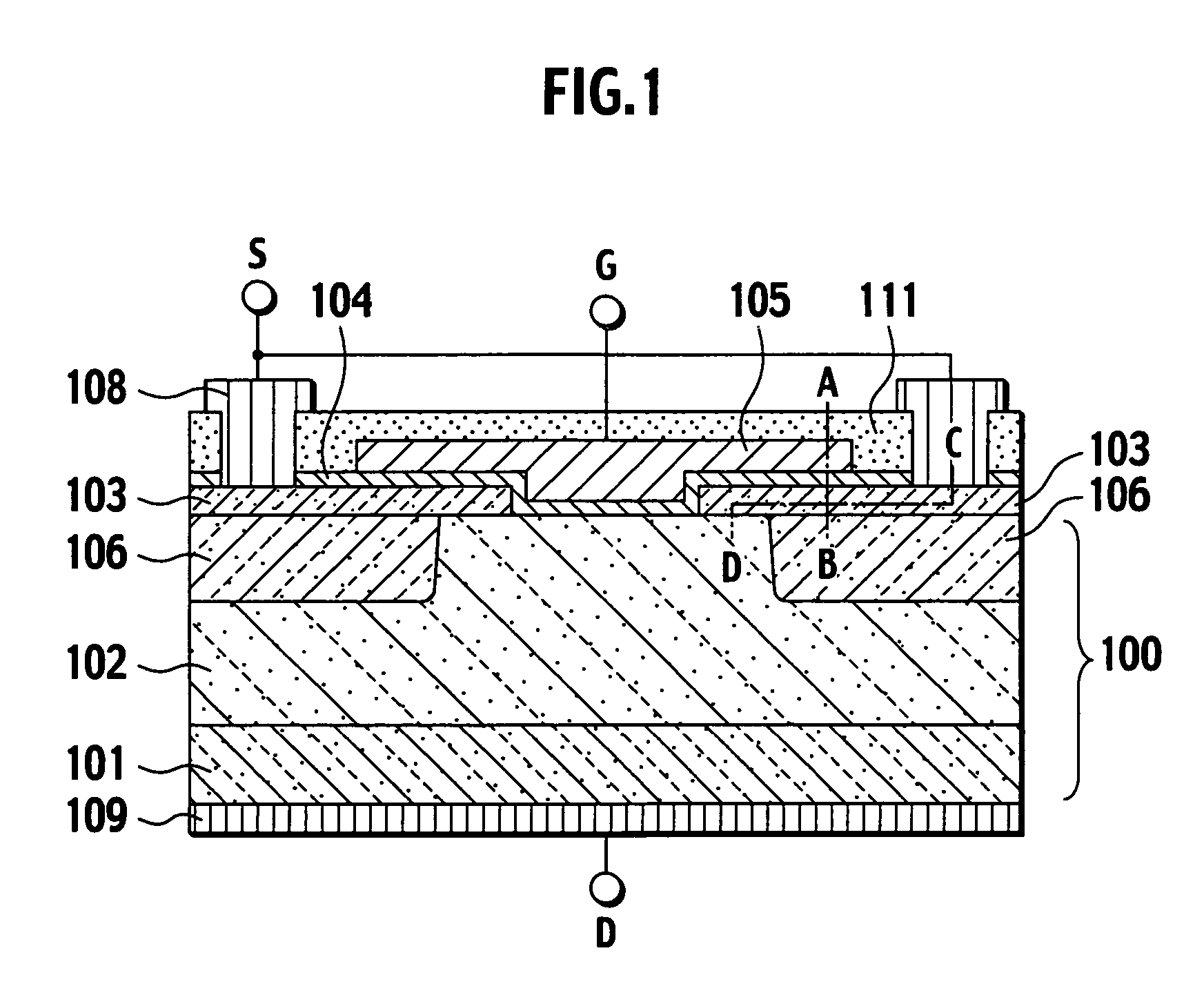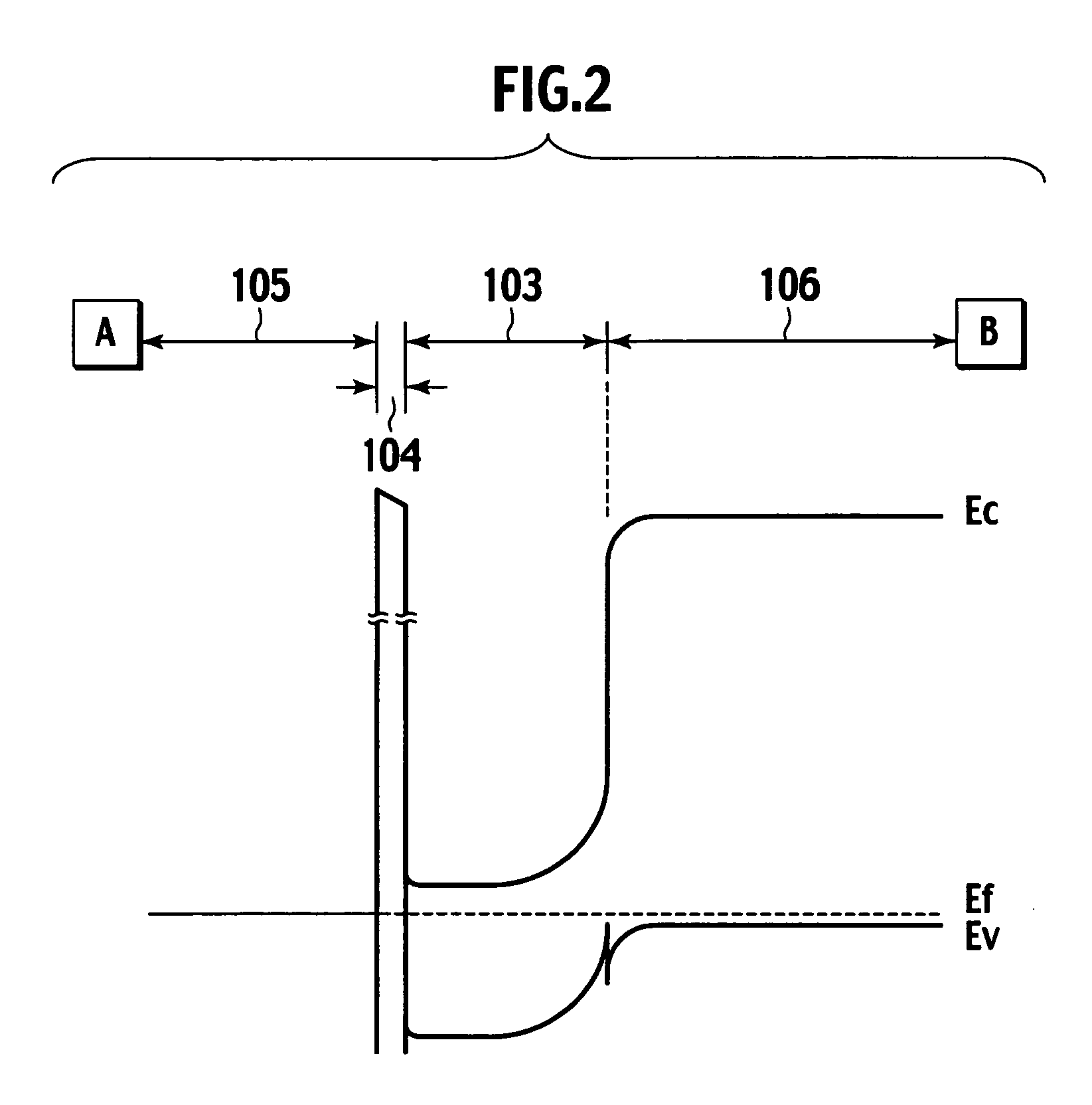Semiconductor device with heterojunction
a technology of semiconductor devices and heterojunctions, applied in the field of semiconductor devices, can solve the problems of increasing the leakage current from the heterojunction interface, the difficulty of achieving a high withstand voltage and a low on-resistance, etc., to achieve the effect of improving the driving force of transistors, lowering the barrier height, and increasing the leakage curren
- Summary
- Abstract
- Description
- Claims
- Application Information
AI Technical Summary
Benefits of technology
Problems solved by technology
Method used
Image
Examples
first embodiment
[0017]FIG. 1 is a sectional view showing a semiconductor device according to a first embodiment of the present invention. The semiconductor device has an n-type silicon carbide substrate 101 and an n-type silicon carbide epitaxial layer 102 whose impurity concentration is lower than that of the substrate 101. The substrate 101 and epitaxial layer 102 form a silicon carbide semiconductor base 100 made of n-type silicon carbide. Here, silicon carbide serves as a first semiconductor material and n-type serves as a first conductivity type. The semiconductor base 100 forms a heterojunction with a hetero-semiconductor region 103 made of n-type polycrystalline silicon. Here, polycrystalline silicon serves as a second semiconductor material and has a band gap different from that of silicon carbide. A first gate electrode 105 is formed on a first gate insulating film 104 in the vicinity of the heterojunction formed between the epitaxial layer 102 and the hetero-semiconductor region 103. A p-...
second embodiment
[0030] In the first embodiment, the part that extends a built-in electric field into the hetero-semiconductor region 103 is a part of the p-type silicon carbide region 106. Instead of the p-type silicon carbide region 106, the second embodiment employs metal whose work function is greater than that of the first semiconductor material (silicon carbide) having the first conductivity type (n-type) and that of the second semiconductor material (polycrystalline silicon).
[0031]FIG. 5 is a sectional view showing a semiconductor device according to the second embodiment. The semiconductor device includes an n-type silicon carbide substrate 101 and an n-type silicon carbide epitaxial layer 102 whose impurity concentration is lower than that of the substrate 101. The substrate 101 and epitaxial layer 102 form a silicon carbide semiconductor base 100 made of n-type silicon carbide. Here, silicon carbide is a first semiconductor material and n-type is a first conductivity type. The semiconduct...
third embodiment
[0036]FIG. 7 is a sectional view showing a semiconductor device according to a third embodiment of the present invention. In FIG. 7, a silicon carbide semiconductor base 100 includes an n-type silicon carbide substrate 101 and an n-type silicon carbide epitaxial layer 102 whose impurity concentration is lower than that of the substrate 101. The semiconductor base 100 forms a heterojunction with a hetero-semiconductor region 103 made of polycrystalline silicon serving as a second semiconductor material whose band gap is different from that of silicon carbide. Adjacent to the heterojunction formed by the epitaxial layer 102 and hetero-semiconductor region 103, there is a first gate insulating film 104 on which a first gate electrode 105 is formed. Facing the first gate electrode 105 through the hetero-semiconductor region 103 and first gate insulating film 104, there is an insulated gate region consisting of a second gate insulating film 113 and a second gate electrode 114. A source e...
PUM
 Login to View More
Login to View More Abstract
Description
Claims
Application Information
 Login to View More
Login to View More - R&D
- Intellectual Property
- Life Sciences
- Materials
- Tech Scout
- Unparalleled Data Quality
- Higher Quality Content
- 60% Fewer Hallucinations
Browse by: Latest US Patents, China's latest patents, Technical Efficacy Thesaurus, Application Domain, Technology Topic, Popular Technical Reports.
© 2025 PatSnap. All rights reserved.Legal|Privacy policy|Modern Slavery Act Transparency Statement|Sitemap|About US| Contact US: help@patsnap.com



